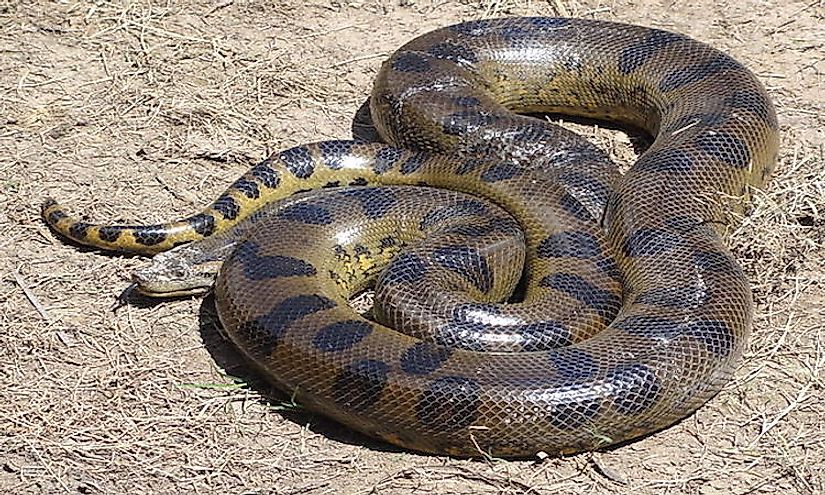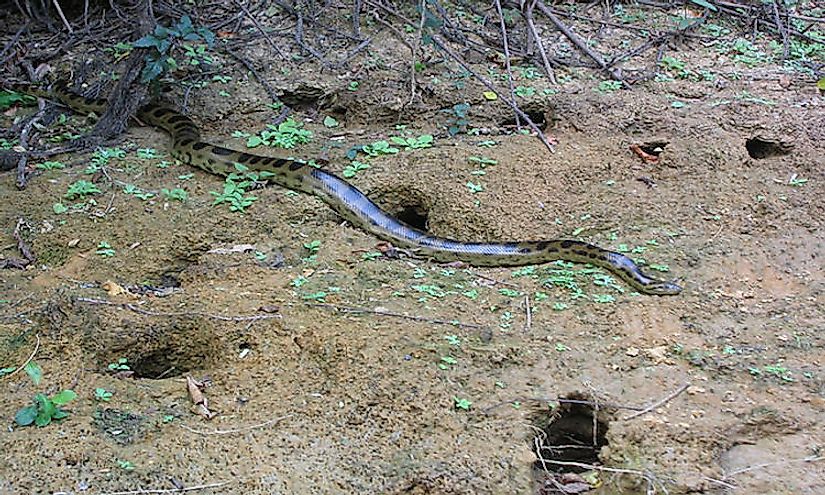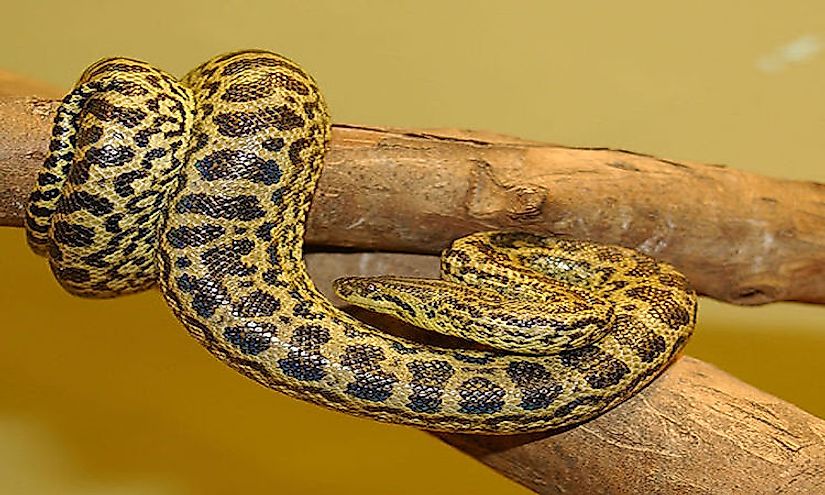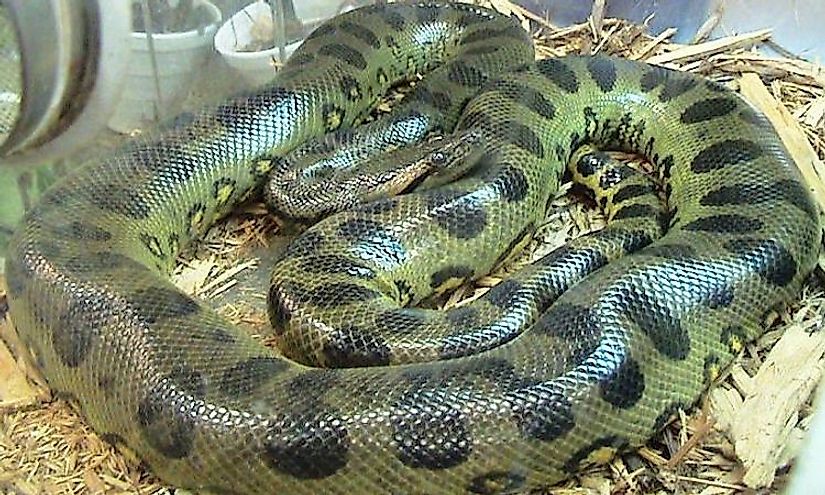The Four Species Of Anacondas

Anacondas are large snakes belonging to the genus Eunectes. They live in the tropical parts of South America and are classified into four species. Here is a list of the same.
4. Bolivian Anaconda -

Commonly known as the Beni anaconda or the Bolivian anaconda, the Eunectes beniensis is a nonvenomous species of Boa that is endemic to Bolivia’s Beni Province. The snake grows up to four meters. Although it was believed to be a hybrid between yellow and green anacondas, it is currently recognized as a distinct species. Within its range, the anaconda lives in aquatic muddy, swampy flooded habitat.
3. Darkly-Spotted Anaconda -
Commonly known as the De Schauensee’s anaconda or the dark-spotted anaconda, the Eunectes deschauenseei is a nonvenomous boa constrictor that is endemic to the northeastern parts of South America. It is found in coastal French Guiana, Guayana, and northeastern Brazil. Within its range, the dark-spotted anaconda inhabits seasonally-flooded wetlands and swamps.
2. Yellow Anaconda -

The yellow anaconda or the Paraguayan anaconda (Eunectes notaeus) is a species of boa that is endemic to the wilds of South America. Although it is not as big as the green anaconda, it is still a giant reptile. The yellow anaconda lives in the southern parts of the continent where its range includes Paraguay, parts of southern Brazil, Bolivia, and northeastern Argentina. Adults of this species grow up to 10.8 to 14.4 feet and weigh about 25 to 35 kg. The snakes are colored yellowish, greenish yellow or a golden tan with blotches, spots, streaks or saddles of dark brown or black.
Within its habitat, the yellow anaconda prefers to inhabit swamps, marshes, slow-moving rivers and streams. These snakes are classified as a generalist feeder with a wide prey base. These snakes are reputed for being unpredictable in nature and could be dangerous to humans. However, the opposite is also true, and humans are the biggest threats to the survival of these snakes since the anacondas are extensively hunted for their skin.
1. Green Anaconda -

Also known as the water boa or the common anaconda, the green anaconda (Eunectes murinus) is a South American non-venomous species of boa. It is one of the longest and heaviest species of snakes inhabiting the world today. The snake attains a length of about 17.1 feet and weighs between 30 to 70 kg. There are, however, reports of anacondas as long as 35 to 40 feet but substantial evidence is still lacking. The longest known specimen of this species was a 17.09 feet long green anaconda encountered by Dr. Jesús Antonio Rivas, an anaconda specialist. The body color of the anaconda is olive green with overlaid black colored blotches throughout the length of the snake. Two subspecies of the green anaconda are recognized: E. m. gigas and E. m. murinus.
The green anaconda is primarily a nocturnal species that spends most of its lifetime near or in water. The snakes are efficient swimmers and have eyes set high on the head so that they can keep vigil on things happening above the water surface while swimming. Although these snakes move sluggishly on land, they are quick in the water. When a prey is detected, the snake will immediately coil the prey and constrict it to kill it by suffocation before swallowing. Birds, reptiles, mammals, and fish are all part of the wide prey base of the green anaconda. Large mammals like tapirs, deer, caimans, and capybaras are also consumed, though not on a regular basis. There are local legends claiming that these anacondas are man-eaters. However, substantial evidence proving this fact is yet to be discovered.







